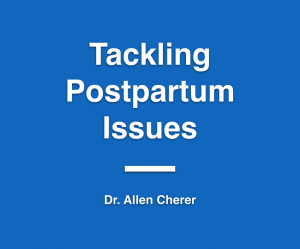 Working in the field of neonatal care, I know all too well the health risks that come with pregnancy and childbirth, especially among women who can’t readily access health care. Some common (and serious) postpartum health conditions include diabetes, hypertension, and depression, all of which are more common among racial and ethnic minority women. However, it’s hardly a lost cause, and doctors can do their part to connect women suffering in the pregnancy and postpartum period to healthcare. I recently read an article by Elizabeth A. Howell, whose work creating an “intervention design” at Mount Sinai is based around providing postpartum care to women. This was recently published in the Maternal and Child Health Journal.
Working in the field of neonatal care, I know all too well the health risks that come with pregnancy and childbirth, especially among women who can’t readily access health care. Some common (and serious) postpartum health conditions include diabetes, hypertension, and depression, all of which are more common among racial and ethnic minority women. However, it’s hardly a lost cause, and doctors can do their part to connect women suffering in the pregnancy and postpartum period to healthcare. I recently read an article by Elizabeth A. Howell, whose work creating an “intervention design” at Mount Sinai is based around providing postpartum care to women. This was recently published in the Maternal and Child Health Journal.
According to the Healthcare Effectiveness Data and Information Set (HEDIS), at least 80 percent of commercially-insured women in this country have a timely postpartum visit. Yet among those insured by Medicaid, that percentage goes down to about 60. This is due to various factors: transportation, child-care demands, money, and poor doctor-patient communication. While there isn’t an “easy fix” to this problem, reducing the barriers between patient and doctor makes it much easier for women to receive the necessary postpartum care. In the article, Howell outlines various ways that her design reduces that barrier: education about the risks and importance of postpartum care, community resources, and financial incentives for providers who help make sure women return for postpartum care. Since such a large percentage of patients are Spanish-speakers, her interventions are available in both English and Spanish.
So far, Howell’s program seems to be yielding some good results: the visit rate for Healthfirst patients at her hospital was up to 71 percent through 2016. Patients, many of whom are socially isolated, have also expressed their appreciation. Through my experience, I can tell you just how serious the postpartum period is for the health of mothers as well as children. I’ve thought about the many positive benefits of assuring comprehensive postnatal care. In the end, I think this may turn out to be the best way to improve prenatal care, and consequently newborn outcomes.
